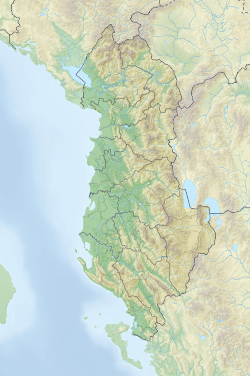| Name | Species | Locality | Material | Notes | Reference |
|---|
| Acaeniotyle | umbilicata | Panaya PAN R24 MG 102 | | | [2] |
| Triactoma | cf. hybum | Panaya PAN R24 | | |
| hybum | MG 102 | | |
| cf. paronai | Panaya PAN R27 PAN R28 | | |
| Angulobracchia | portmanni | Panaya PAN R24 MG 102 Panaya PAN R27 | | |
| Crucella | spp. | Panaya PAN R24 Panaya PAN R27 Paliambela TD-9 | | |
| cf. messinae | SO-PAL 107 MG 108 | | |
| Crolanium | puga | Panaya PAN R24 | | |
| cf. cuneatum | PAN R28 Paliambela TD-9 | | |
| spineum | Paliambela TD-9 Paliambela TD-10 | | |
| Pseudoeucyrtis | hanni | Panaya PAN R24 SO-PAL 21 MG 51 MG 102 Panaya PAN R27 | | |
| Thanarla | brouweri | Panaya PAN R24 SO-PAL 21 MG 51 Mg 102 SO-PAL 102 SO-PAL 128 MG 108 Panaya PAN R27 PAN R28 PAN R29 Paliambela TD-9 Paliambela TD-10 Paliambela TD-11 | | |
| pseudodecora | SO-PAL 21 MG 51 Mg 102 | | |
| pulchra | SO-PAL 107 SO-PAL 102 | | |
| praeveneta | SO-PAL 107 SO-PAL 102 SO-PAL 128 | | |
| spoletoensis | Paliambela TD-11 | | |
| Archaeodictyomitra | lacrimula | Panaya PAN R24 MG 51 MG 102 | | |
| vulgaris | MG 102 SO-PAL 102 | | |
| montisserei | SO-PAL 107 SO-PAL 102 SO-PAL 128 SO-PAL 111 MG 108 | | |
| Dictyromitra | communis | Panaya PAN R24 | | |
| gracilis | Panaya PAN R27 Paliambela TD-11 | | |
| montisserei | Panaya PAN R27 PAN R28 PAN R29 Paliambela TD-9 Paliambela TD-10 Paliambela TD-11 | | |
| Becus | helenae | MG 102 | | |
| Halesium | sp. | SO-PAL 107 SO-PAL 202 | | |
| cf. diacanthum | PAN R28 | | |
| Dactyliodiscus | cf. lenticulatus | SO-PAL 102 SO-PAL 111 | | |
| Acaeniotyle | amplissima | SO-PAL 102 Panaya PAN R27 PAN R28 | | |
| cf. tribulosa | PAN R28 Paliambela TD-9 | | |
| Acastea | diaphorogona | SO-PAL 102 SO-PAL 111 PAN R28 | | |
| Dicerosaturnalis | amissus | SO-PAL 102 | | |
| Stichomitra | communis | SO-PAL 102 SO-AL 128 MG 107 MG 108 Paliambela TD-8 PAN R29 Paliambela TD-9 Paliambela TD-10 Paliambela TD-11 | | |
| Pessagnobrachia | cf. fabianii | SO-PAL 128 | | |
| Acanthocircus | levis | SO-PAL 128 | | |
| Ultranapora | cf. praespinifera | SO-PAL 128 | | Now classified as Napora , a synonym. [3] |
| Napora | | SO-PAL 128 | | |
| Mita | gracilis | SO-PAL 128 MG 108 | | |
| Obeliscoites | perspicuous | SO-PAL 111 | | |
| cf. perspicuous | Paliambela TD-8 | | |
| Pseudodicyomitra | cf. carpatica | Panaya PAN R24 SO-PAL 21 MG 102 | | |
| cf. lodogaensis | SO-PAL 107 PAN R28 Paliambela TD-9 | | |
| hornatissima | Panaya PAN R27 | | |
| pentacolaensis | Paliambela TD-9 Paliambela TD-10 | | |
| Archaeospongoprunum | cf. cortinaensis | Panaya PAN R27 | | |
| Staurasphaera | longispina | Panaya PAN R27 PAN R28 | | |
| Hiscocapsa | asseni | Panaya PAN R27 | | |
| Crolanium | spineum | Panaya PAN R27 | | |
| Acanthocircus | cf. angustus | PAN R28 | | |
| cf. multidentatus | Paliambela TD-11 | | |
| Holocryptocanium | barbui | PAN R29 | | |
| Xitus | mclaughlini | Paliambela TD-10 Paliambela TD-11 | | |
